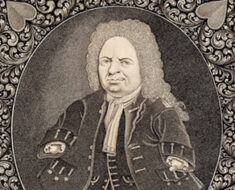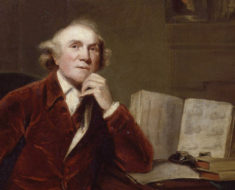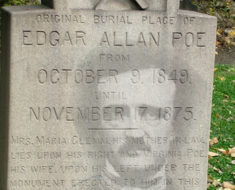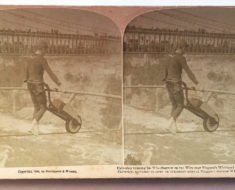The body of a woman, named Lavrinia Merli, a peasant, who was supposed to have died from hysterics, was placed in a vault on Thursday, 3rd July. On Saturday evening it was found that the woman had regained consciousness, had torn her grave-clothes in her struggles, had turned completely over in the coffin, and had given birth to a seven-month-old child. Both mother and child were dead when the coffin was opened for the last time.”
This terrifying report from the July 22, 1890 edition of The Undertakers’ Journal was just one of many such published stories on premature burial.
This was nothing new. For more than a hundred years concerned inventors created special coffins that would allow anyone buried alive to escape or at the very least ring for help. In 1868, Franz Vester created one that even had a storage place for snacks. Read more about that here.
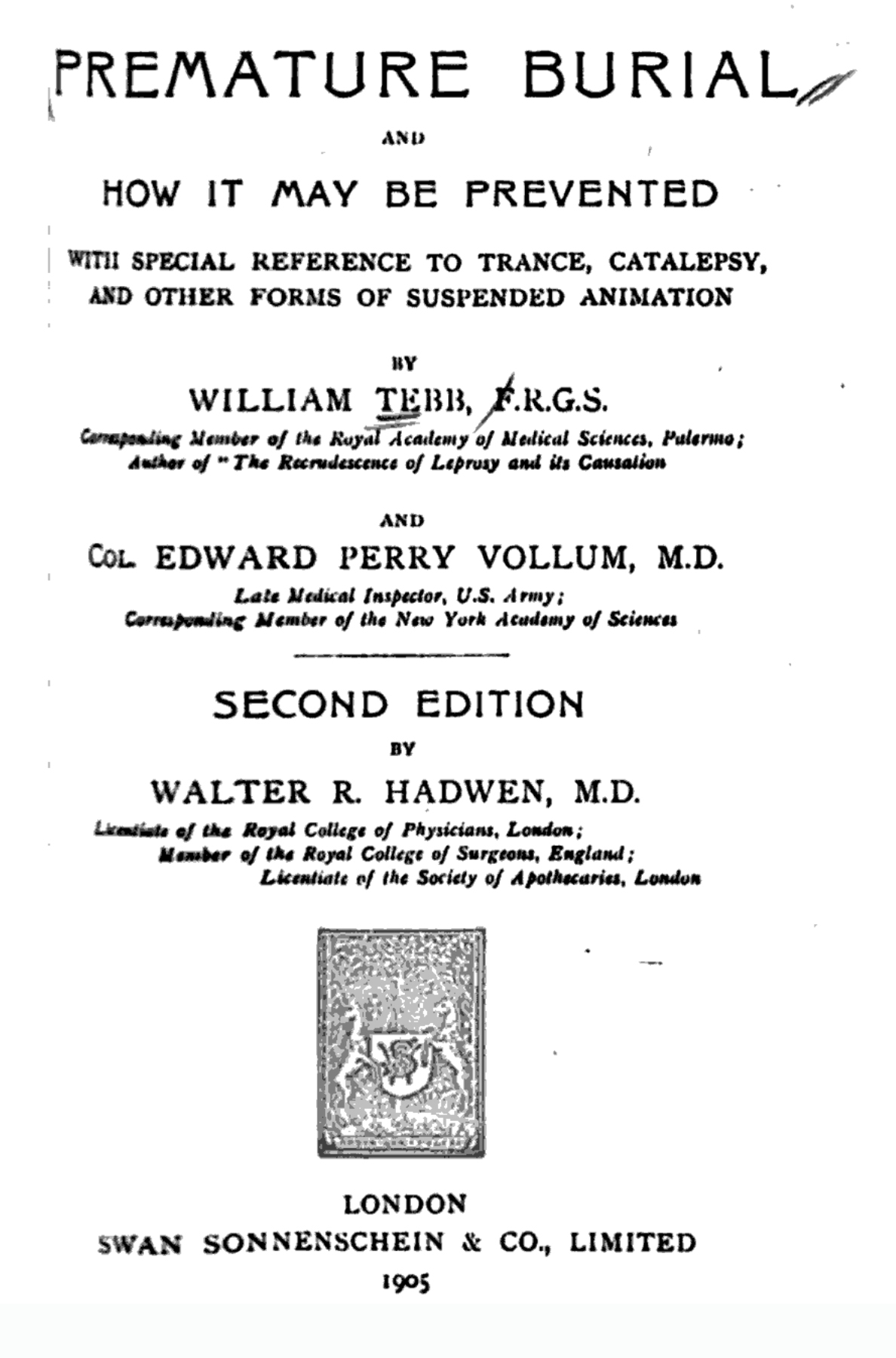
Premature Burial title page from the second edition, 1905.
Yet none of these devices had eliminated the problem and by 1896 William Tebb had had enough. Too many people were being buried alive and dying entrapped in a coffin. Whether people were suffering from Cholera, trance, or simple misdiagnosis, something had to be done.
Tebb, an Englishmen who was heavily involved in social reform and preached against vaccination, joined forces with a fellow anti-vaccinationist, Walter Hadwen, and a doctor who was nearly buried alive, Edward Perry Vollum, to fight against premature burial with the publication of a book, Premature Burial: How It May Be Prevented.
The book cites numerous stories of live burials and, as the title suggests, ways to prevent such horrors.
That year, Tebb and Hadwen also founded a new organization called The London Association for the Prevention of Premature Burial.
The Association distributed their book, along with others on the topic, such as A Plan for Forming Associations for the Prevention of the Burial of Persons Alive, by an Army surgeon, and The Absolute Signs of Death, and the Prevention of Premature Burial, by the eminent British physician, Sir Benjamin Ward Richardson, F.R.S.
Sharing stories with the public may have helped increase awareness and incite fear, but it wasn’t enough to bring about real change. For that, they attempted to have Parliament pass a bill ensuring greater diligence on the part of doctors before allowing bodies to be interred.
![Premature Burial [Public domain], via Wikimedia Commons-Illustration for Edgar Allan Poe's story The Premature Burial by Harry Clarke (1889-1931), published in 1919.](https://www.weirdhistorian.com/wp-content/uploads/2017/09/PrematureBurial-Harry-Clarke-Public-domain-via-Wikimedia-Commons-Illustration-for-Edgar-Allan-Poes-story-22The-Premature-Burial22-by-Harry-Clarke-1889-1931-published-in-1919.-1.jpg)
Premature Burial [Public domain], via Wikimedia Commons-Illustration for Edgar Allan Poe’s story The Premature Burial by Harry Clarke (1889-1931), published in 1919.
“I beg to ask the Secretary of State for the Home Department whether his attention has been drawn to the statement made by the London Association for the Prevention of Premature Burial, in The Lancet of 24th April, that in England and Wales 16,000 persons are annually buried without medical certificates of any sort; and whether the Government will take the matter into its serious consideration so as to prevent as much as possible persons being prematurely buried?”
Sir Matthew White Ridley responded:
“I have not seen the statement to which the hon. Member alludes, but it is not the case that 16,000 persons are buried annually without medical certificates. The number of uncertified deaths in 1896 was 11,464; and there has been a steady decrease for many years past, both in the actual number of such deaths and in the proportion which they bear to the total number of deaths. No cases of premature burial have been brought to my notice, nor am I aware that it is a matter which falls within my jurisdiction; but in any case I am unable to see that the obtaining a certificate of death would be a guarantee against a premature burial taking place.”
Parliament’s lack of concern did not stop the Association’s efforts. Rest was for the dead. (The truly dead.) By 1905, reports surfaced once again about a new bill to introduce to Parliament. A chief complaint of Tebb and his allies was that a medical certificate proclaiming death wasn’t required for a burial. And when such certificates were provided, the Association claimed that they were often signed by doctors who hadn’t even examined the bodies. Therefore, the first part of the bill stated:
“No burial or other disposal of a dead body shall take place without a medical certificate, and that no such certificate shall be given without a personal inspection and examination of the body, the certificate stating the signs from which death is inferred.”
Additional clauses attempted to enforce proper practices by doctors and to reward those who saved a not-dead-yet person from an untimely sepulture:
… It shall not be lawful for any Justices, magistrate, or sanitary or other authority to make an order for the burial of a corpse, except upon proof that putrefactive decomposition has commended in the said corpse; and any such order when given shall not be binding upon any one who has not been cited to be heard in opposition to the same.
Any duly qualified medical man may, subject to the provisions of this Act, on the application of any person charged with the burial or other disposal of the body of a deceased person or still-born child, inspect the body for the purpose of ascertaining the reality of death, and may deliver a certificate of the same …
Any person by whose diligence an apparently dead person is restored to life shall be entitled to a special fee on application to Justices or a stipendiary magistrate having jurisdiction where the restoration occurred. The fee so awarded shall not exceed 5 pounds for each person who may be entitled to a fee, and shall be paid out of the district rates.”
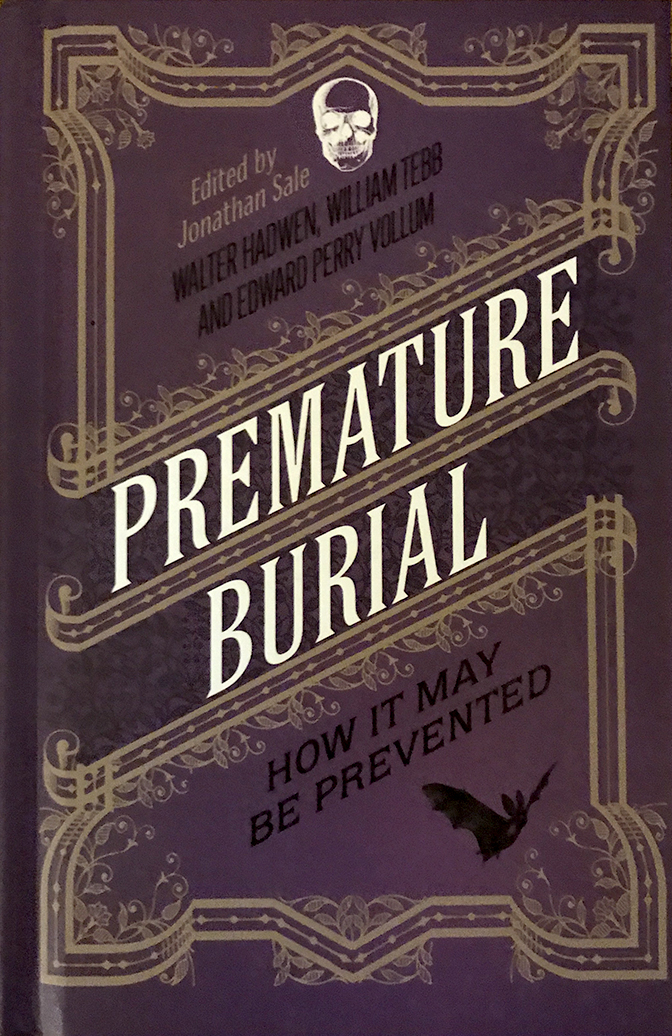
Reprint of Premature Burial: How It May Be Prevented. Hesperus Press Limited, 2012.
Yet despite these efforts and the Association’s great concerns, the medical community scoffed and believed Tebb and his fellow worriers were just being dramatic. In the June 23, 1906 St. Louis Medical Review, an article entitled “An Alarmist Report on Premature Burial” explains why they found difficulty in taking the Association seriously:
The ‘London Association for the Prevention of Premature Burial’ claims to be in possession of 219 cases in which people have been buried alive in England during the past ten years, in consequence of which, it is stated, a bill is to be introduced into parliament for the establishment of a department in London to take charge of this matter. The possibility of burial alive, though we do not believe it to occur with the frequency asserted by the association, must be admitted. We are more skeptical about persons being ‘cut up for anatomical purposes while still alive’—as is asserted to have happened in ten cases—and of eight other being ’embalmed while not yet dead.’ But when we are asked to believe that it is positively known that one person ‘was cremated while still alive,’ we draw the line. After cremation it would be absolutely impossible to make the discovery; while if the subject was known—not believed—to be alive at the time of the cremation, someone was guilty of murder, that is all. On the whole, while we are an advocate of greater precautions being taken than is usually the case, we decline to be worked up to an alarmist pitch by statements the utter absurdity of one of which casts discredit upon all.”
Tebb’s crusade continued right up to his own death in 1917. In his will, he made it clear that his body was not to be disposed of until “unmistakable evidence of decomposition,” was visible.
His wishes were respected. Tebb was cremated a full week after his death.

![Pharmacie Rustique, by Nach Natur gezeichn et von G. Locher (1730 - 1795) (1774), graviert von Bartholomäus Hübner (1775) [Public domain], via Wikimedia Commons](https://www.weirdhistorian.com/wp-content/uploads/2017/04/Pharmacie_Rustique-By-Nach-Natur-gezeichn-et-von-G.-Locher-1730-1795-1774-graviert-von-Bartholomäus-Hübner-1775-Public-domain-via-Wikimedia-Commons-cropped-235x190.jpg)
